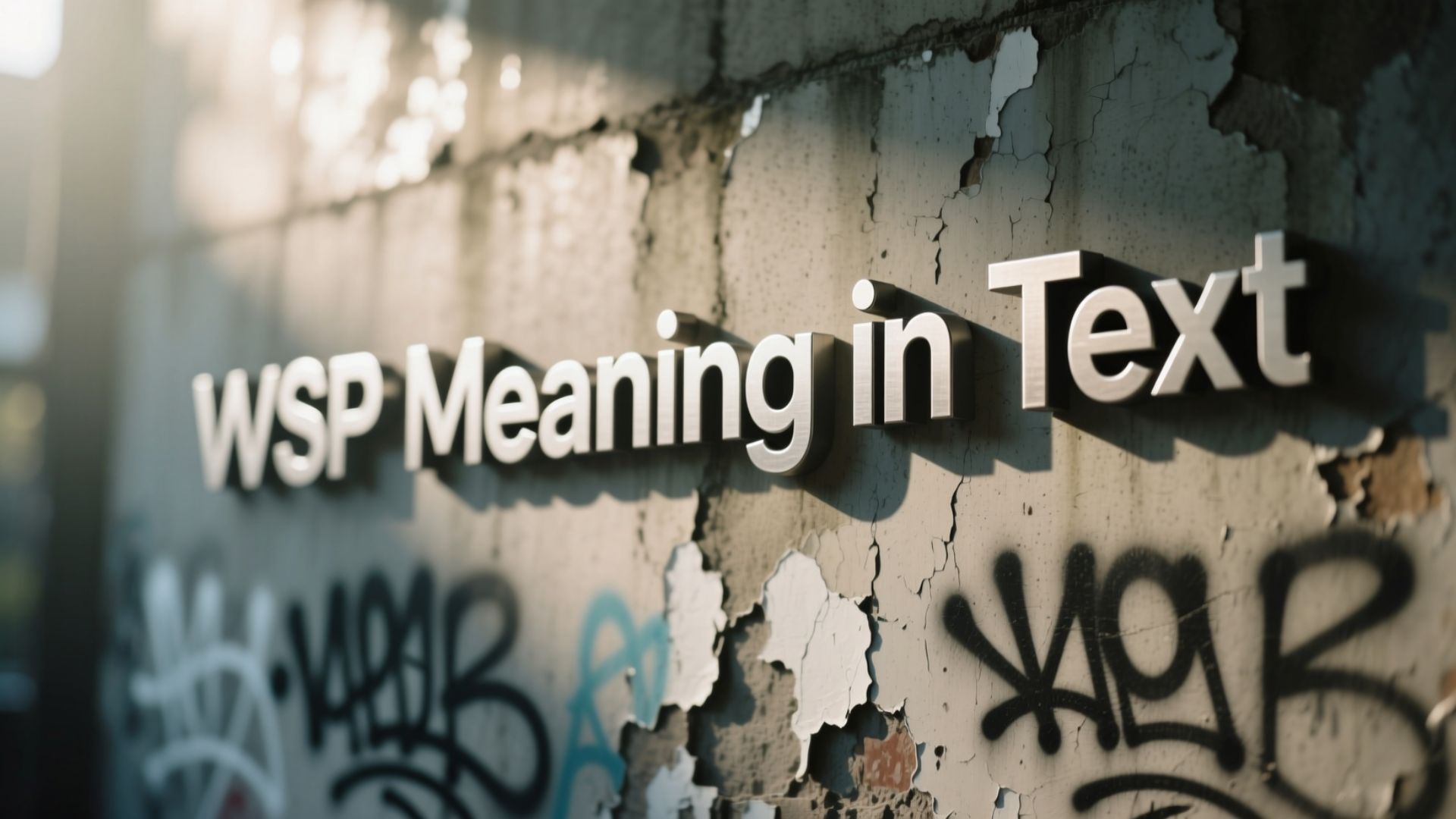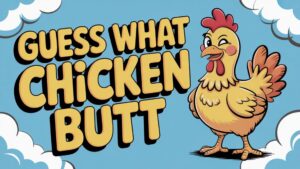Texting has changed the way we talk. Shortcuts, acronyms, and slang pop up every year, and some stay longer than others. One such acronym that keeps showing up in chats is WSP. If you’ve seen it in a text or social media message and wondered what it means, you’re not alone.
This guide breaks down wsp meaning in text, explores how it’s used across different platforms, shows you when it fits and when it doesn’t, and even gives real-world examples you can use in your own chats.
What Does WSP Mean in Texting?
The most common meaning of WSP in texting is “What’s Up?”. It’s a shorthand greeting, similar to saying hello, but with a casual and friendly twist.
Instead of typing the full phrase, people often send WSP to quickly start a conversation. Think of it as a modern version of “Hey, how’s it going?”
Quick facts about WSP:
- Origin: Popularized in texting and online chatrooms in the early 2000s.
- Usage: Primarily informal, never professional.
- Tone: Relaxed, friendly, often lighthearted.
So if you get a text saying “WSP,” the sender isn’t asking you about a project or business matter. They’re simply checking in, sparking a chat, or showing casual interest.
Different Contexts of WSP
Even though wsp meaning in text is straightforward, its vibe changes depending on context. Let’s explore where and how it’s commonly used.
Friendly Conversations
Most often, WSP is sent between friends. It’s a quick way of asking, “What are you doing?” or “How are you?” without sounding too formal.
Example:
- Text from John: WSP bro?
- Reply from Alex: Not much, just chilling. You?
Flirty or Casual Tone
In dating apps or casual flirting, WSP can carry a playful undertone. The sender might use it to test the waters or open up a light chat.
Example:
- Text from Lisa: WSP cutie 😉
- Reply from Ryan: Haha, not much. Thinking about you.
Group Chats
In group chats, it often works as an icebreaker. Someone might drop a “WSP” to get people talking again.
Example:
- In a group of college friends: “WSP everyone? Party tonight?”
Not Fit for Formal Conversations
Here’s where you need to be careful. Using WSP in emails, workplace chats, or formal discussions can feel unprofessional or even rude. Imagine texting your boss “WSP?”—it just doesn’t work.
WSP on Social Media and Messaging Apps
Like many acronyms, WSP shows up differently depending on the platform. Here’s a quick breakdown.
| Platform | How WSP Is Commonly Used | Example |
|---|---|---|
| Snapchat | Streak opener, placeholder text | Sending “WSP” daily to keep streak alive |
| Instagram DMs | Casual conversation starter | “WSP, did you see the new post?” |
| TikTok | Comment shorthand or reaction | “WSP 😂 this is hilarious” |
| Everyday friend check-in | “WSP man, long time no see” | |
| Messenger | Casual chats with friends/family | “WSP sis, dinner at mom’s?” |
As you can see, it works across platforms, but it’s always informal.
When to Use WSP (And When Not To)
The beauty of WSP is its flexibility, but timing matters.
When It’s Perfect to Use
- Greeting close friends.
- Starting a light, casual chat.
- Maintaining Snapchat streaks.
- Breaking the silence in a group chat.
- Flirty or fun exchanges.
When to Avoid It
- Professional emails.
- Workplace messaging platforms like Slack.
- Formal discussions with teachers, clients, or elders.
- Situations where tone could be misread as lazy or dismissive.
Etiquette tip: Match your tone with your relationship. If the person normally uses emojis, acronyms, and slang, then WSP fits. Otherwise, stick to more traditional greetings.
Examples of WSP in Action
Sometimes the best way to understand a phrase is to see it in use. Below are real-life scenarios and replies you can borrow.
Scenario 1: Friends Texting
- Message: WSP dude?
- Reply: Nm, just watching Netflix. Hbu?
Scenario 2: Flirty Chat
- Message: WSP babe 😘
- Reply: Just missing you. What about you?
Scenario 3: Snapchat Streaks
- Message: WSP
- Reply: Same, just sending streaks.
Scenario 4: Group Chat Icebreaker
- Message: WSP fam, movie night?
- Reply: I’m in! Let’s pick a film.
Quick Reply Ideas
- “Not much, you?”
- “Chilling, hbu?”
- “Just finished work, what’s good?”
- “Nothing much, what’s up with you?”
Variations and Related Acronyms
Language evolves, and so do acronyms. WSP isn’t the only shorthand for greetings. Here are some variations and close cousins.
- SUP – Another way of saying “What’s up?”
- WSUP – A longer version, often used in urban slang.
- HRU – “How are you?”
- WYD – “What you doing?”
- HBU – “How about you?”
These acronyms are often interchangeable in casual chats. The choice depends on preference, tone, or region. For example, SUP is more popular in the US, while WYD has become universal across TikTok and Instagram.
Why Acronyms Like WSP Matter in Modern Communication
Why do people use acronyms like WSP instead of writing out full phrases? The answer is simple: speed, tone, and culture.
Speed and Convenience
Typing three letters is faster than typing two full words. In the age of instant communication, saving seconds matters.
Tone and Style
Using WSP instantly sets a casual tone. It tells the receiver, “This is friendly, not formal.”
Digital Language Evolution
From LOL to BRB to WSP, acronyms shape how we connect online. They reflect cultural trends and the need for short, snappy communication.
FAQs About WSP
Let’s clear up the most common questions about wsp meaning in text.
Does WSP always mean “What’s Up?”
- In most cases, yes. But context matters. Rarely, it can stand for something else like “Web Service Provider” in tech.
Can WSP be used in business chats?
- No. It feels unprofessional and too casual for work. Stick with “Hello” or “Good morning.”
Is WSP rude if sent without context?
- Not usually, but it can feel lazy if you only send “WSP” and nothing else. Pair it with an emoji or a follow-up message.
Is WSP popular among all age groups?
- Mostly among teens and young adults. Older generations often prefer full phrases.
Case Study: How WSP Shapes Online Interaction
Consider Snapchat streak culture. Many users—especially Gen Z—send quick messages daily to maintain streaks. WSP became a perfect placeholder: short, simple, and universally understood.
A survey by Pew Research on teen communication habits found that acronyms and slang are essential to building digital friendships (source). Acronyms like WSP don’t just save time; they act as signals of belonging within online communities.
Conclusion
The next time someone sends you WSP, you’ll know exactly what they mean. It’s a quick, casual way of saying “What’s Up?”, best suited for friendly, informal chats.
From friends catching up to Snapchat streaks and flirty texts, wsp meaning in text always carries a relaxed vibe. Just remember: keep it casual, avoid it in formal settings, and use it to keep conversations flowing naturally.









